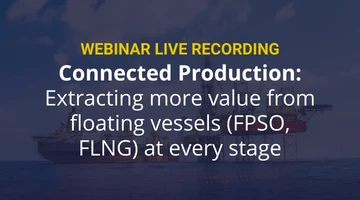FLNG market surges
Oil price changes to influence the industry for the next five years
Add bookmarkU.S. FLNG market surge in oil prices to influence the industry dynamics 2017-2024
The significant plunge in oil price trends that has created a challenging environment for the LNG sector, can be primarily credited for FLNG market growth. Against this backdrop, conventional LNG players are embarking on experiments based on FLNG technology. Though still a niche segment, the FLNG market has of late gained global attention, due to the substantiations backing its competitive viability over traditional onshore liquification plants. Beneficial fiscal initiatives undertaken by the government with regards to energy supply security are also promoting industry expansion.
You might be interested: Top 10 FLNG projects.
Recently, the European Union Member States have inked an investment proposal worth €444 million in priority energy infrastructure projects. Under the same agreement, the Connecting Europe Facility (CEF) of the European Union funded €102 million in Croatian LNG projects located on the island of Krk. A recent report brought forth By Global Market Insights Inc., depicts a global FLNG market expected to exceed $78 billion by the end of 2024.
Global FLNG projects
The sanctioning of Italian oil company, ENI’s Coral South FLNG project in Mozambique sheds a positive light on the future prospect of the FLNG industry. The Coral South Project is proclaimed to be the first FLNG offshore project in Africa and the third of its kind on a global level. When the world is treading on a path of a low carbon matrix, developing a plant on FLNG-based techniques is deemed to be a strategic move by the Italian giant. Taking into account some of the burgeoning factors outlining a transition in the LNG business space, including increased natural gas consumption, energy security programs, and a paradigm shift in fuel preference, FLNG market ground looks promising for future investments.
Significant deployment of integrated LNG-FLNG projects - especially across power-deficit countries - has upscaled FSRU vessel implementation and driven overall FLNG industry commercialisation. In fact, market experts assert that FLNG technology has the potential to be a game-changer in the liquefaction industry, both from commercial and technical standpoints. Increasing demand for gas-fuelled power plants has reinforced the commercialisation of LNG regasification, a factor which is positively impacting FLNG market growth. Some of the adhered benefits of this technology include a short construction period, environmental viability, cost efficiency, and mobility.
Recent projects in the FLNG market
Wison Offshore & Marine has announced that it intends to develop a range of floating solutions equipped with regasification, integrated LNG loading and storage facilities, and power generation in a single unit. If reports are to be believed, the production capacity will fall in the range of 10 MW to 800 MW. The company believes that floating LNG power generation solutions have been deployed across major regions, primarily subject to the environmental policies enforced across the globe. In this regard, Wison’s aforementioned project is an evidence of the major developments underlining the FLNG market.
[inlinead]
The Indonesian Government has also recently come up with their plan of increasing its total LNG import capacity to 35 GW by the end of 2019. The regional government has also introduced a program for development of gas fired plants to upgrade the LNG import infrastructure for addressing new electrification targets.
FLNG in the USA
Geographically, the United States is projected to witness significant gains in the global FLNG market. Favorable US government initiatives to minimalise environmental damage from marine operations is one of the factors upscaling the regional FLNG market demand. Recently, the US Maritime Administration has approved a deepwater floating LNG export facility situated in the Gulf of Mexico. As claimed by the company spokesperson, this facility would include four floating liquification vessels, having an individual volume capacity of 210,000 cubic meters. It is reported to be the first of its kind to receive a government approval. With such exemplary initiations by the regional government, U.S. FLNG market is forecast to witness a CAGR of 38% over 2017-2024.
Flexible volume contracts, competitive pricing, and existing production assets are some of the factors that will enhance FLNG market growth in the coming years. Many regions are looking forward for FLNG-based plants installation, considering the high infrastructural cost of the onshore LNG plant installation.
Some of the prominent players operating in FLNG market include Höegh LNG, Woodside Petroleum, Exmar, Golar LNG, Mitsui O.S.K. Lines, Petronas, Ophir Energy, Noble Energy, Eni, Royal Dutch Shell, Excelerate Energy, Hyundai Heavy Industries, Samsung Heavy Industries, and Mitsubishi Heavy Industries, Ltd.
If you enjoyed this article, why not have a look at our guide to FPSOs?







